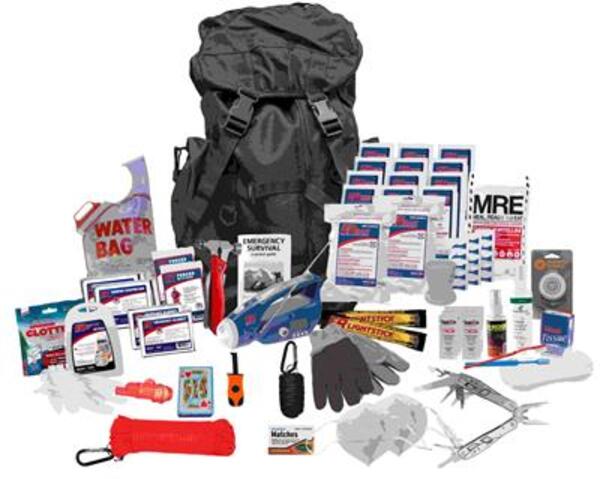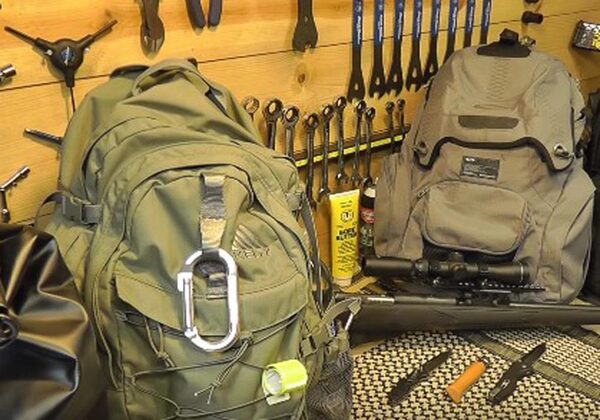The car bug-out bag is designed to get you safely to your destination. It might be from school to home, home to camp, home to a relative’s home, or any combination of these. In this article, we will list several essential contents of a car bug-out bag. Please read on the check if you have them all.
What Is A Bug Out Bag
Having everything you need to get from one place to another, a bug-out bag is a kit. They are also known as a Get Out of Dodge bag (A battle box, a grab bag, a 72-hour bag, or a personal emergency relocation kit (PERK) are examples of emergency preparedness kits. A less complicated one is the “Get Home Bag.”
Additionally, it could be a kit you grab when you need to flee a flood, tornado, fire, or other man-made or natural disaster.
Basically, “bugging out” refers to leaving a place as soon as possible. These various kits are all very different from one another. A BOB may have enough food and supplies for 72 hours, additional clothing and supplies for the walk home, or both. No one’s needs can be met by a single basic kit.
Car Bug Out Contents
Water And A Survival Straw
According to the Nutrition Health and Examination Survey (NHANES), an adult male needs 3.7 liters of water per day, while an adult woman needs 2.7 liters per day. Water weighs a lot, though, and a liter is equal to 1 kg (2.2 lbs.). It is advised to use a lighter, collapsible plastic bottle with a wide mouth and a removable cap for this reason.
Avoid using the stainless steel bottle that is used to boil water to further reduce your load. There is no need to pack extra water purification equipment in a car bug-out bag because a survival straw can filter up to 1,000 gallons (4,000 liters) of water before it loses its effectiveness.
Food
Because a person can go up to three weeks without eating, a car bug-out bag typically only has a small amount of food. The objective when preparing food for a car bug-out bag is to select a calorie-dense food source. Just bring enough food for three days or at least 1,500 calories per day.
Maps
If you are familiar with your surroundings well enough, you may not require paper maps, but you should still think about getting some for the car. You could also purchase a compass and practice using it. Although they are becoming more difficult to find, paper maps don’t require any electronics.

Clothing
The car bug-out bag should be kept separate from a pair of well-fitting hiking boots in the car. For anyone who is planning a long hike, wool socks are a necessity. It will prevent blisters from developing and keep your feet dry.
Always have two pairs of wool socks on hand. Blisters can also be delayed or even prevented with the help of shoe liners and insoles.
Pack some jeans, a long sleeved shirt, and a hoodie for the ladies. For the most part, the men’s daily attire is sufficient for the hike. A waterproof poncho or full-body raincoat must also be packed.
Duct Tape
Duct tape rolls or Rittape Pocket Duct Tape are both acceptable options.
Amazingly useful, this stuff Your clothing should be patched. Make a rope for a tarp, seal a chest wound that is sucking, affix a bumper with tape, make a temporary split, and more. It is magic.
If you anticipate having to walk a long distance, the pocket duct tape is a better choice because it is lighter in weight.
Bivy Bag
In a car bug-out bag, an ultra-lightweight bivy sack is used in place of a tent and sleeping bag. A portable, water-resistant shelter is called a bivouac sack, also known as a bivy bag or sack. Weight ranges between 0.35 and 1.375 lbs for various makes and models.
Knife
A 72-hour car bug-out bag only needs a small, lightweight survival knife. If you’re not making a shelter in the woods, which is not the plan, you don’t need a heavy one-handed camping ax.
Spare Ammo
The only additional item you need to pack in your car bug-out bag if you carry a gun is spare ammunition. Usually, a 9mm round weighs between 10 and 14.5g. It may be tempting to pack a lot of ammunition and magazines, but doing so quickly makes the car bug-out bag heavy.
Handgun
A small, light-weight pistol is a good option if you don’t conceal carry or want to include a sidearm in your car bug-out bag. As an illustration, consider a Ruger LC9s, which measures 17.2 oz (487 g) and fires 9mm rounds. The CZ P-07 is another small pistol you might want to think about.
For more choices, you can also look into the Glock family. The prepper’s preferences ultimately determine the type of weapon they choose. Larger caliber weapons aren’t necessary, though, unless your bug-out location is in bear territory and you’re in bear country.
Lighter, Waterproof Matches, And A Magnesium Fire Starter
There is never such a thing as having too many fire starters. They are lightweight, small, and portable, so transporting various types is not a challenge. Even if you aren’t cooking, a fire can be very beneficial for keeping your body warm on chilly nights.
Hand Warmers
Having hand warmers on hand can save your life if it rains and makes it difficult to start a fire. A few hand warmers tucked away in your bivy bag can keep you warm even if you succeed in starting a fire.
A pair of hand warmers typically weighs only 1.5 ounces. Especially in the winter, it’s a good idea to bring extra pairs.
Mylar Blanket
The extremely light-weight space blanket, also known as a mylar blanket, can be used to keep warm. It can be easily folded and is small, so there are no drawbacks to putting it in a car bug-out bag.
Hand Cranked/solar Charged One-way Radio With Flashlight
This one-way radio can be charged using a hand crank mechanism or its built-in solar panel. It receives AM and FM signals and has an integrated LED flashlight.
Although it only has a meager 2000 mAh battery, it can also be used as an emergency power bank. The LED light can last up to 25 hours on one charge despite having a small battery capacity.
Blanket
Leave a wool blanket, or at least an emergency blanket, in your car so you can rest, and you might even carry it if you have to walk across the country in the cold because you have to.
First Aid Kit
The first aid kit won’t have a lot of supplies, but it will have mostly things for blisters, upper extremity fractures, superficial wounds, and pain relief. Any significant wounds on your lower extremities or any severe bleeding indicate disaster right away.
In a SHTF scenario, assistance might not show up. Therefore, it’s crucial to prevent any kind of injury.
Rope
Strong and lightweight paracord is available. It could be used to create a temporary tent, secure the trunk, or tie something to the roof of your car.
A towing strap is more crucial than rope for the car kit portion. Really, the paracord is only useful if you are carrying a 10′ x 8′, 15 ounce tarp. You could also use fishing line or kevlar line as an alternative.

